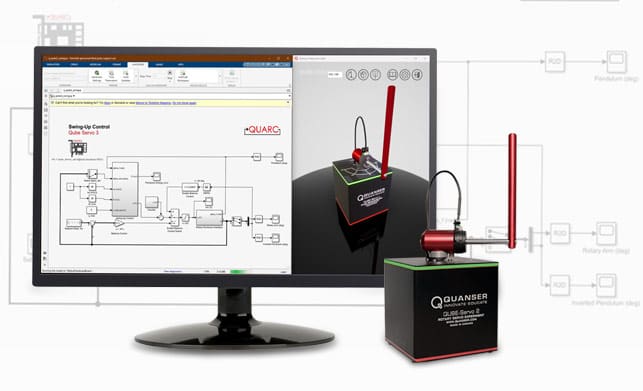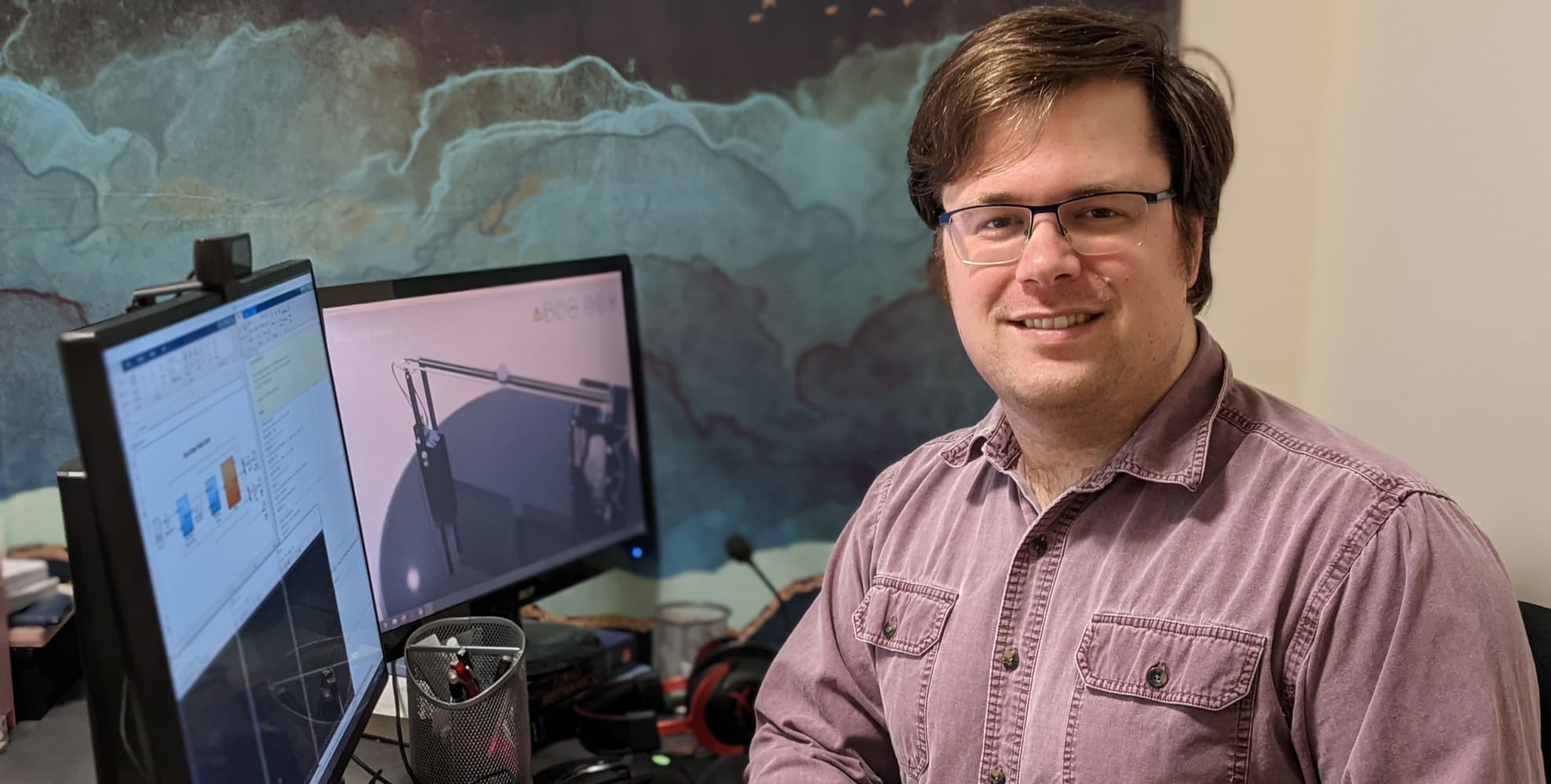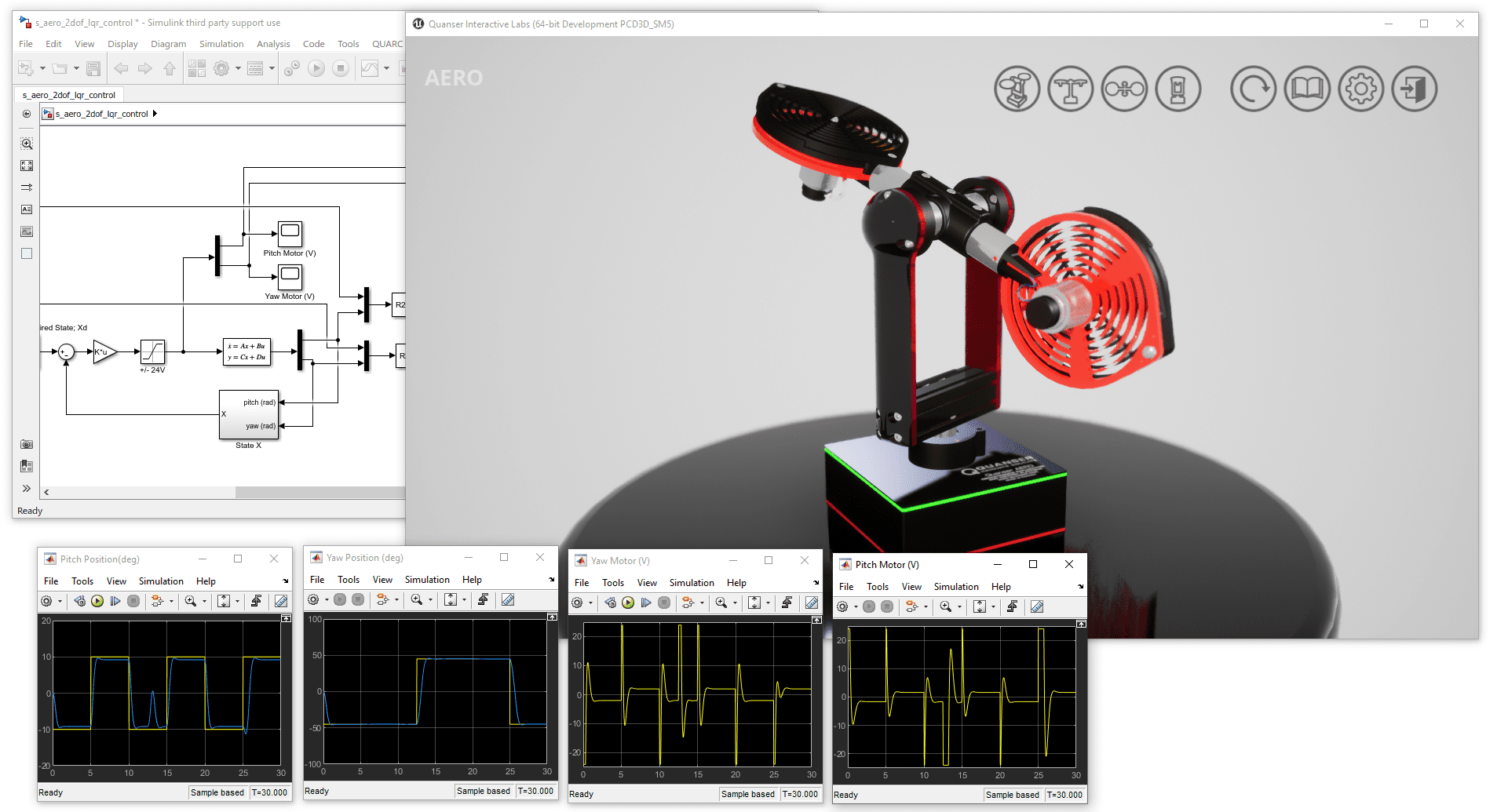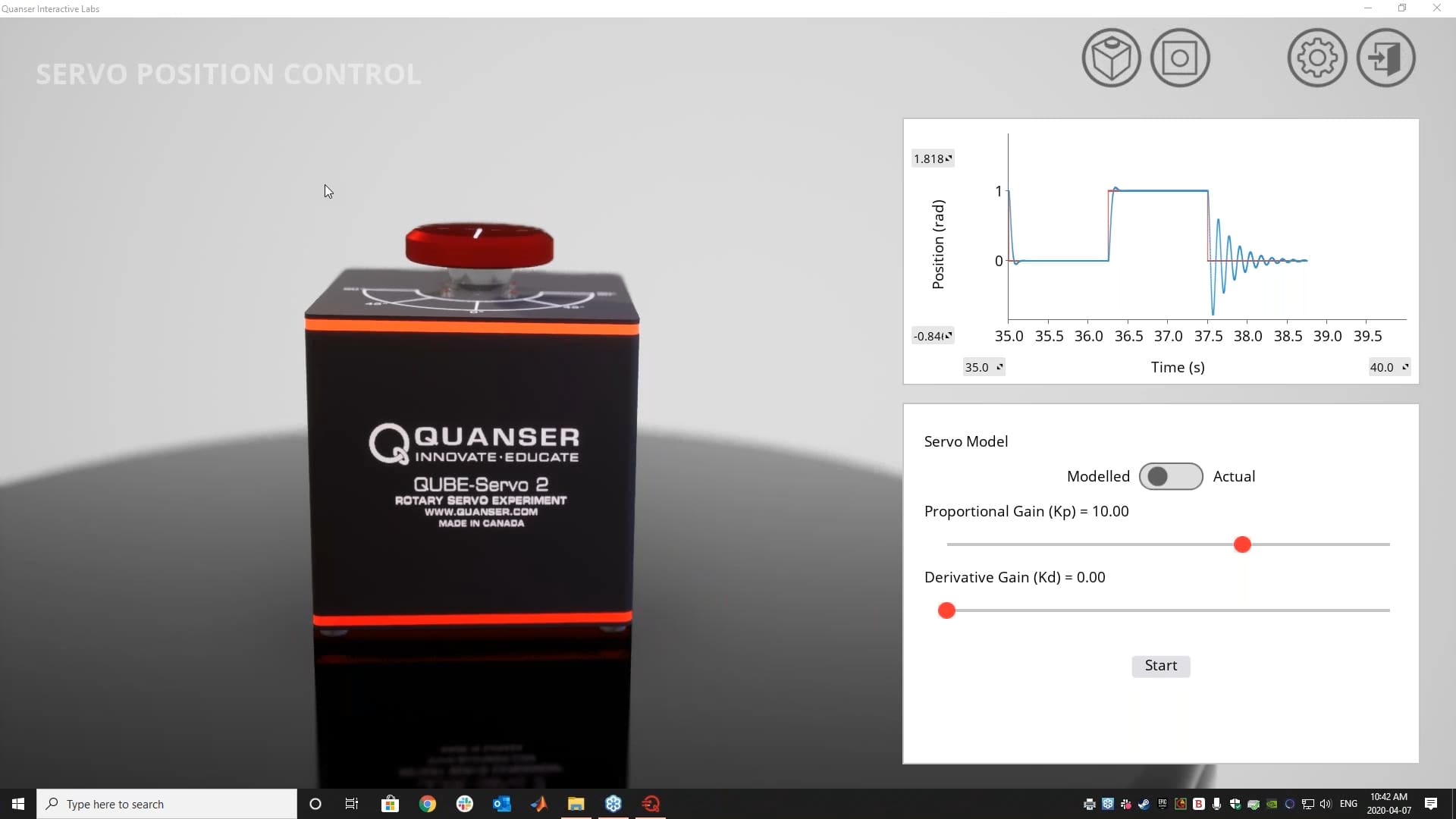
Help – I need a lab!
Engineering labs are vital for a student to gain a full understanding of a subject. This is especially true in the field of control systems, given how the theory is, by nature, very mathematical and sometimes abstract. Thus, with the current pandemic, instructors had to scramble to find new, novel ways to deliver control systems labs to their students in order to give them some practical experience.
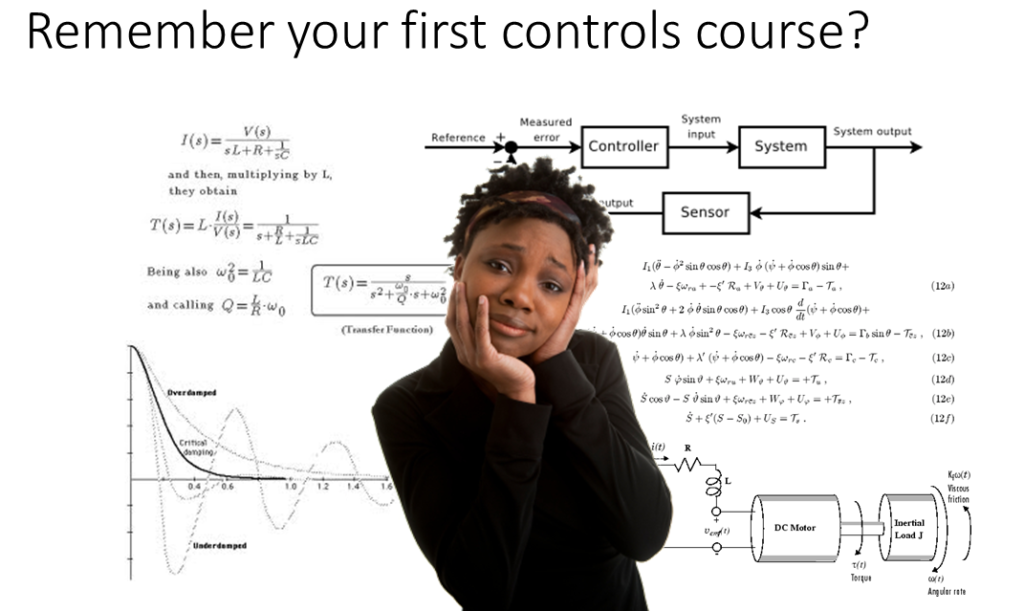
Who is currently using these tools?
Given the importance of hands-on lab activities and the short timeline to deliver them remotely, a consortium of Canadian universities, as well as a number of non-Canadian institutions, adopted the Quanser Digital Experiences. It is a platform to deliver virtual laboratories for signals & systems, modelling, robotics, control system, and aerospace courses. Below are a few institutions from around the world that are currently using our digital solutions.
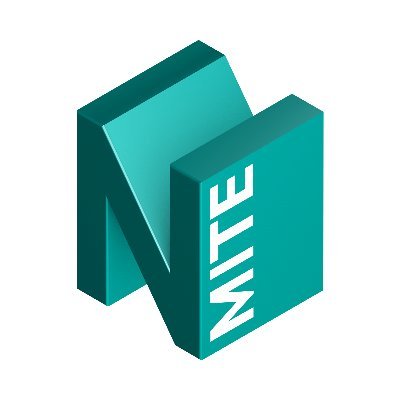 |
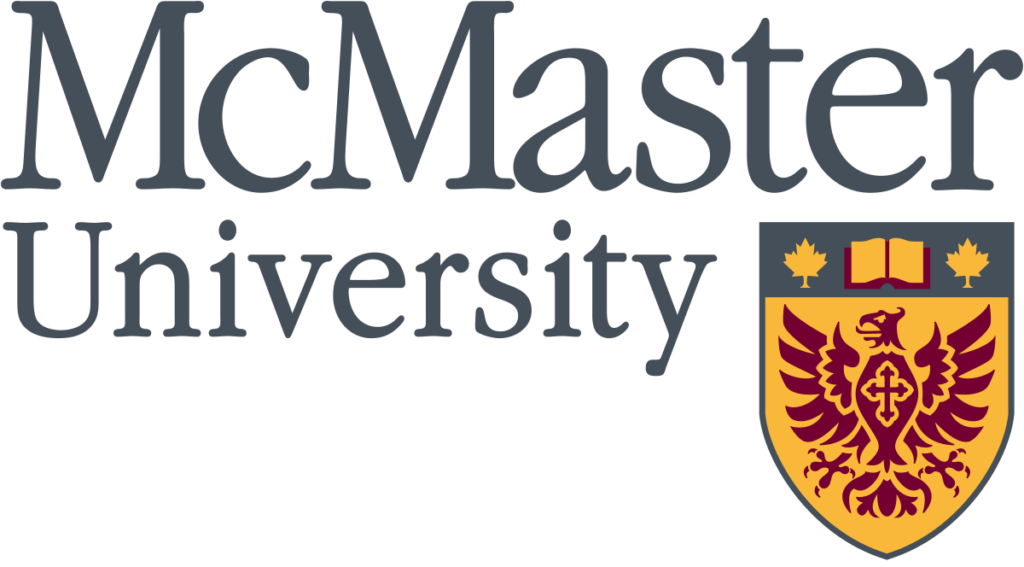 |
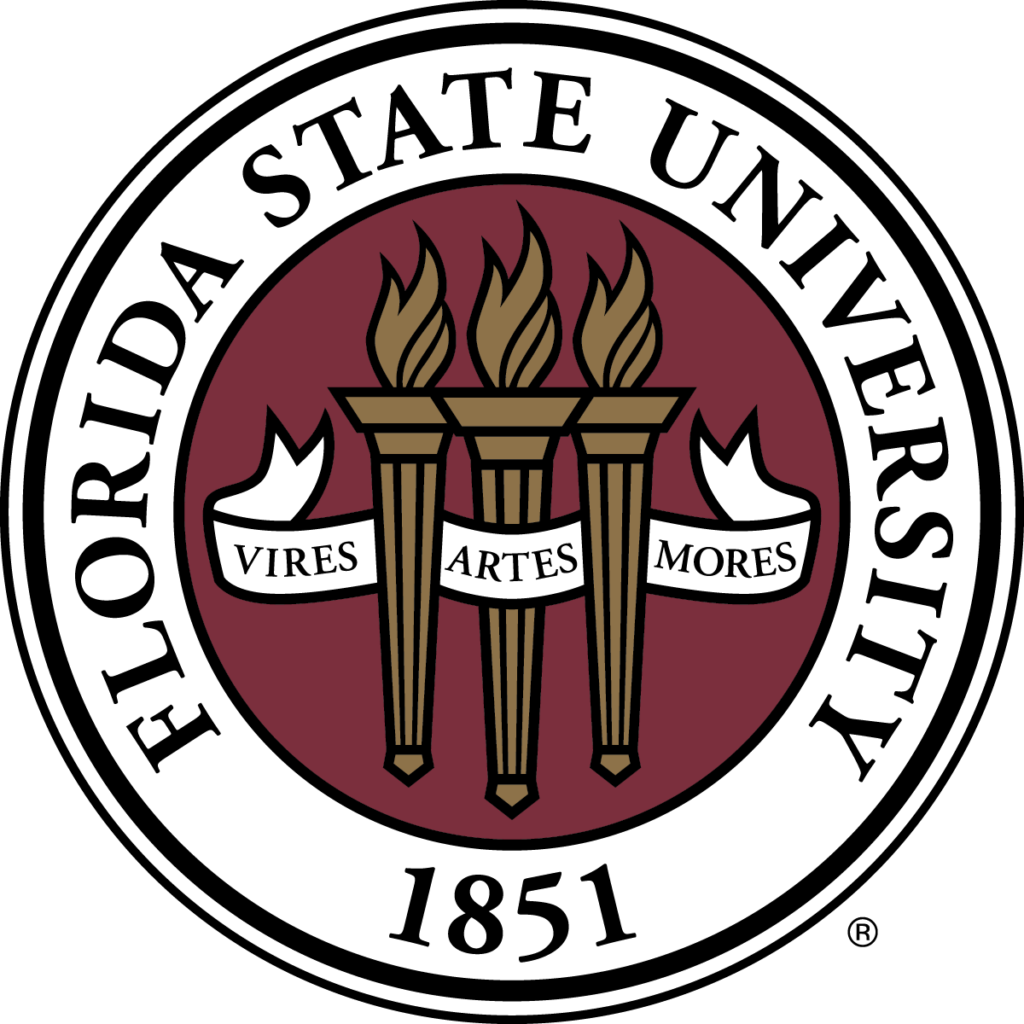 |
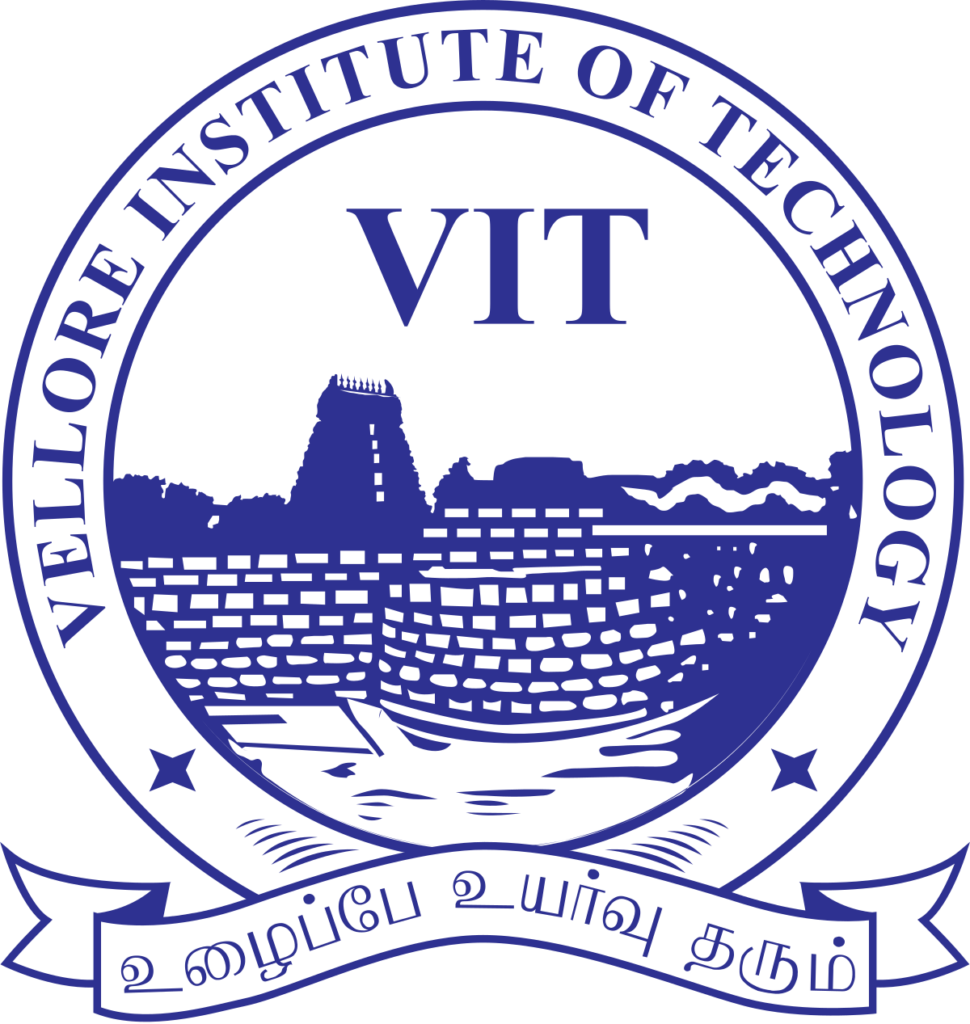 |
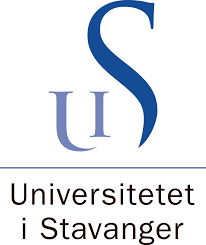 |
| NMITE University, UK | McMaster University, Canada | Florida State University, USA | Vellore Institute of Technology – Chennai, India | University of Stavanger, Norway |
What are the Digital Experience tools that are available?
Quanser has developed two Digital Experiences: the Quanser Mobile Textbook and the Quanser Interactive Labs.
- The Mobile Textbook, or Experience Controls App, covers a multitude of instrumentation, modelling and control systems topics ranging from data-acquisition devices to optimal state-space control. The topics are described concisely using a more casual tone and include hands-on, practical examples. You can download the Experience Controls App today on the Apple App Store and Google Play.
- The Quanser Interactive Labs (QLabs) is the software platform that enables you to interact with the virtual twin of a Quanser plant. There are two versions:
- QLabs Controls: A stand-alone software that has both mobile (Android and iOS) and desktop versions (Windows 10 and macOS). See the link for details on software requirements. It includes a full set of labs using the Quanser Virtual Plants.
- QLabs Virtual Experiments: It enables you to interact with the Quanser Virtual Plants through Simulink® . It features the full courseware that is used with the hardware version of the same system. It supports Windows 10, 64-bit platform and requires MATLAB®/Simulink® (see the link for details on software requirements).
How can I get started?
- Experience Controls can be downloaded for free from the Apple App Store and Google Play.
- Start you free QLabs trial by clicking the link on the https://www.quanser.com/digital/quanser-interactive-labs/ page.
How can I use this for my course?
Here, we outline how the Experience Controls App and QLabs can be used in an typical Control Systems I course. Control Systems I would be the first control systems course that a student would take, for instance, after they have learned about transfer functions in a Signals & Systems course.
The table below outlines common topics taught in the Controls I course. The topics are mapped to specific modules in the Experience Controls App as well as the QLabs Controls stand-alone software and the QLabs Simulink-based Virtual Experiment.
| Lab | Topic | Quanser Mobile Textbook (Experience Controls App) 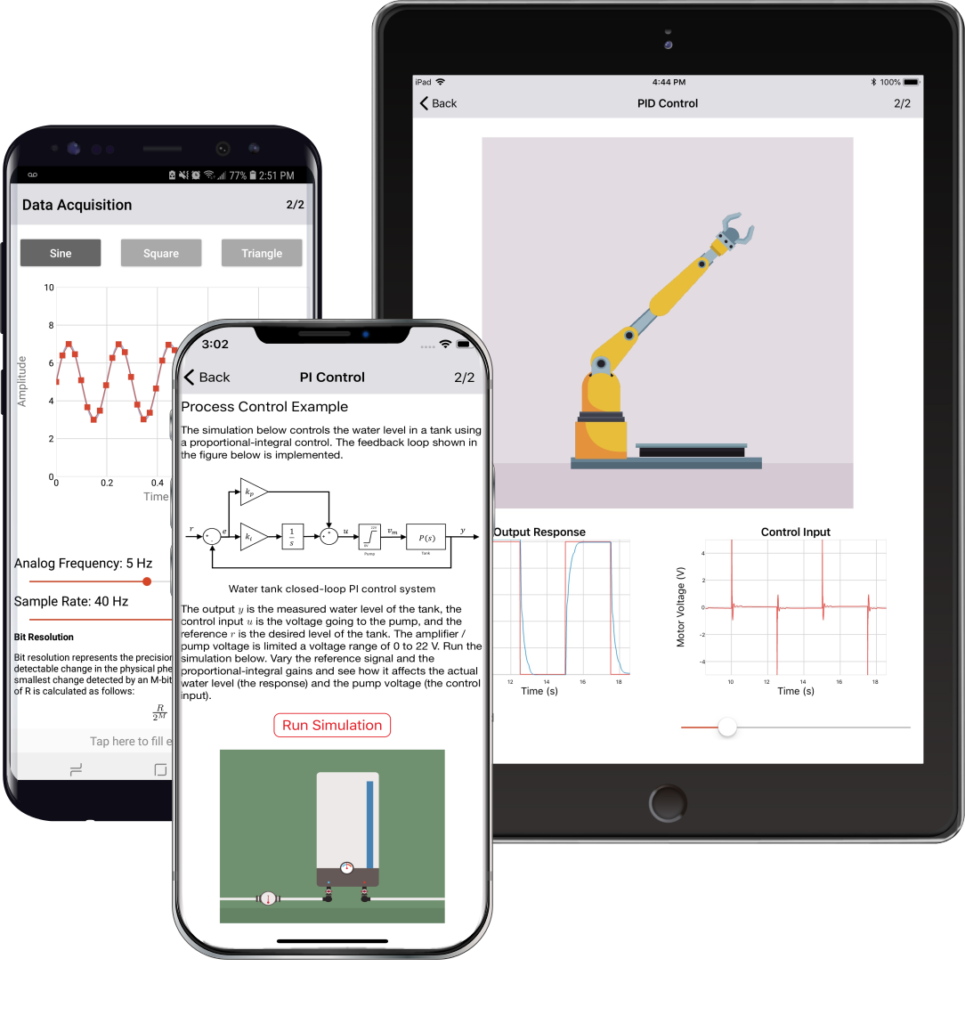 |
QLabs Controls 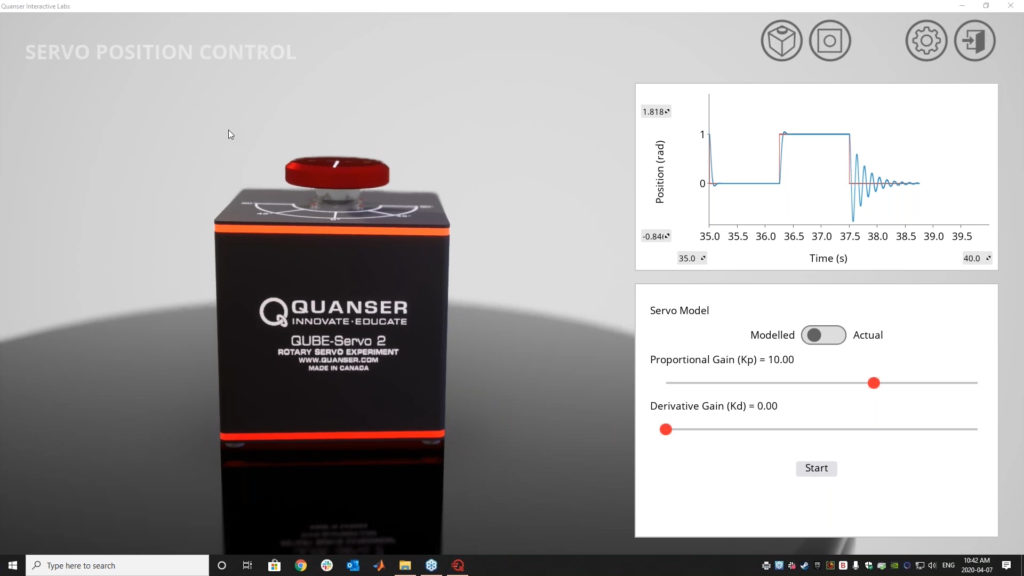 |
QLabs QUBE-Servo 2 Virtual Experiment 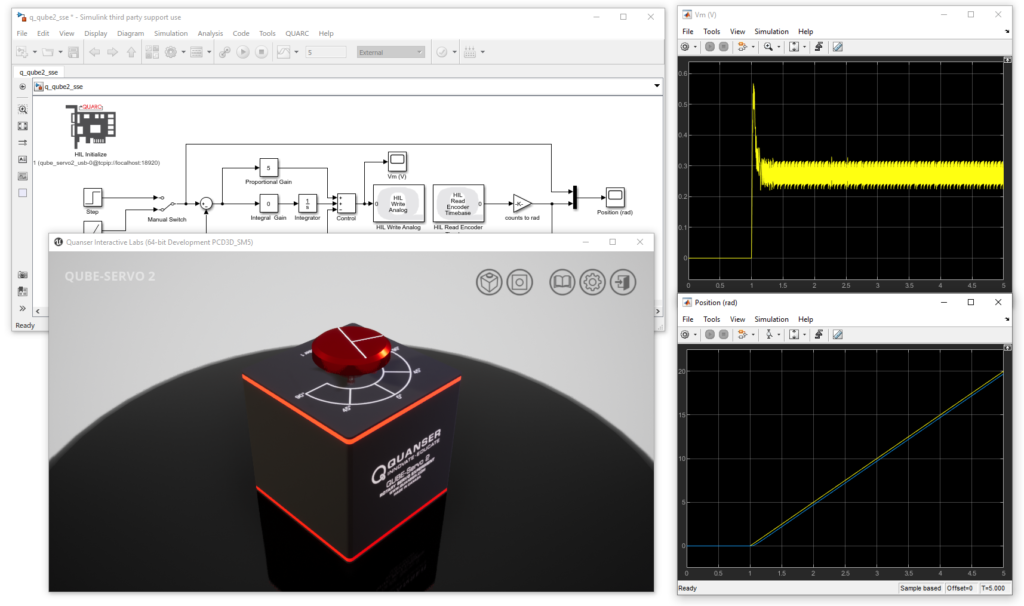 |
| 1 | Investigation of DC Motor Drive Servomechanism and Sensors | Sensors Actuator Data acquisition Signal conditioning |
Get Started: – Download and install Qlabs – Register user name – Run sample lab |
Virtual hardware Interfacing Filtering/measuring speed |
| 2 | First-order transfer function modelling of a DC motor | Step Response Parameter Measurement |
Modelling | Step Response Modelling |
| 3 | Block Diagrams: System poles and zeroes, Block Diagrams Simplification | Laplace Transforms and transfer functions Theoretical modelling Block diagrams |
Parameter Identification | Block Diagram Modelling |
| 4 | Stability and Routh‐Hurwitz Criterion: BIBO stability, Routh‐Hurwitz criterion |
BIBO Pole-zero Routh-Hurwitz |
Stability Analysis (to be released) | Stability Analysis Routh-Hurwitz Stability |
| 5 | Closed-loop position control of DC motor using PD | Proportional control PD control |
Position Control | PD Control |
| 6 | Closed-loop speed control of DC motor using PI | PI control | Speed Control | <design your own> |
| 7 | Frequency Response Identification of a D.C. Motor | Frequency Response Modelling | Frequency Response | Frequency Response Modelling |
| 8 | Lead-lag compensation | Bode plots Lead compensation |
Lead Control | Lead Compensator |
QLabs Controls or QLabs Virtual Experiments – Which one is right for my course?
This depends on a few factors such as what software platform you want your students to use and your teaching objectives.
If you want your students to use MATLAB/Simulink to run the labs, then QLabs Virtual Experiment is the preferred option. This gives more flexibility in terms of designing your own labs and implementing your own controllers. It also comes supplied with more labs — the same ones that are supplied with the Quanser hardware (which is great in case you already are a Quanser hardware user). Therefore as an instructor, you have more resources that you or your TA can use when designing the labs.
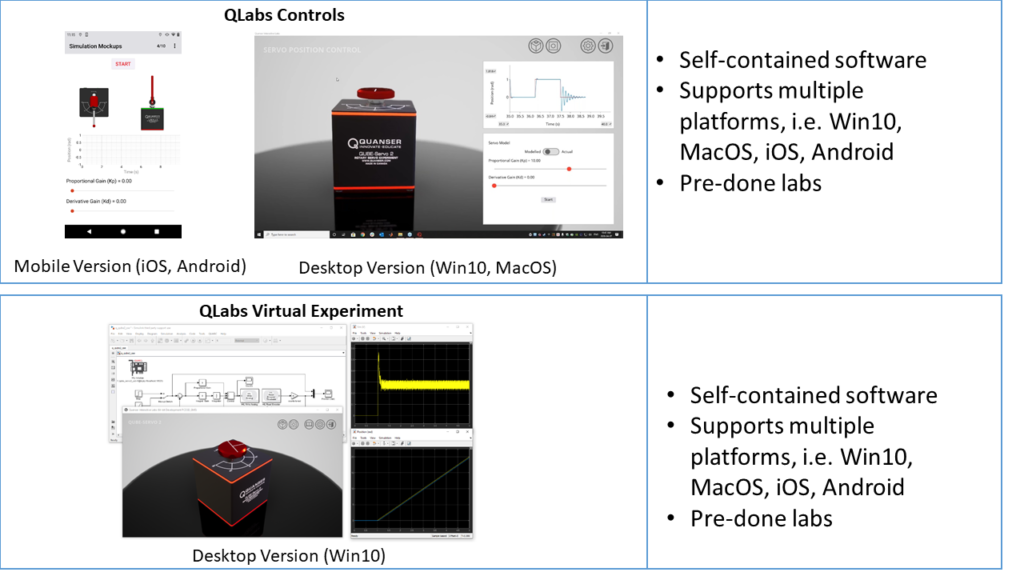
QLabs Controls is a self-contained software that does not rely on MATLAB/Simulink. It has both a mobile version for iOS and Android phones and the desktop version that is compatible with more operating systems (i.e. MacOS, Windows). It also comes with its own set of labs that address the most common modelling and control system topics. If the labs offered match with your syllabus and you don’t need the students to use MATLAB/Simulink at this point, then QLabs Control may be the right approach for you.
Also, as a final remark, some instructor use both. For example, we have a professor at McMaster University that uses the following paradigm:
- Experience Controls App for pre-lecture readings
- QLabs Controls for students to run on their own laptops during the lectures (e.g. for demos).
- QLabs Virtual Experiment for the in-lab portion where they use Simulink to perform more “design” oriented work.
What about hardware?
At the end of the day, we are all engineers and using hardware is part of our DNA. If traditional in-person labs are not an option yet, then here’s what a few of our users have been doing to bring the hardware experience to students:
- Setup a remote lab of the Quanser hardware that the students can access for a few of the labs.
- Demo the Quanser hardware in the in-class or online lecture.
- Have the ability to “sign out” a hardware kit or the actual Quanser hardware and conduct the hardware-based labs at home.
Putting all these different solutions together, the figure below shows how all these solutions could fit together.
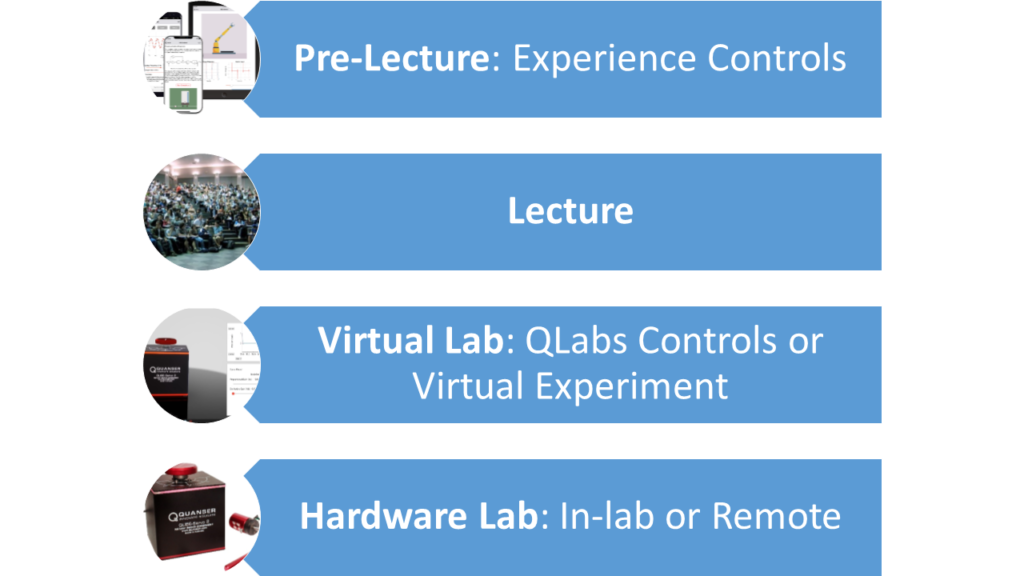
In summary, there are a lot of different delivery and teaching options available with the Quanser Digital Experiences and Quanser hardware solutions. In all these different possibilities, the objective is to always to deliver a practical and immersive experience to the student and help bridge the gap between theory and practice. Please reach out to us if you need help getting setup with your Quanser Digital Experience.

